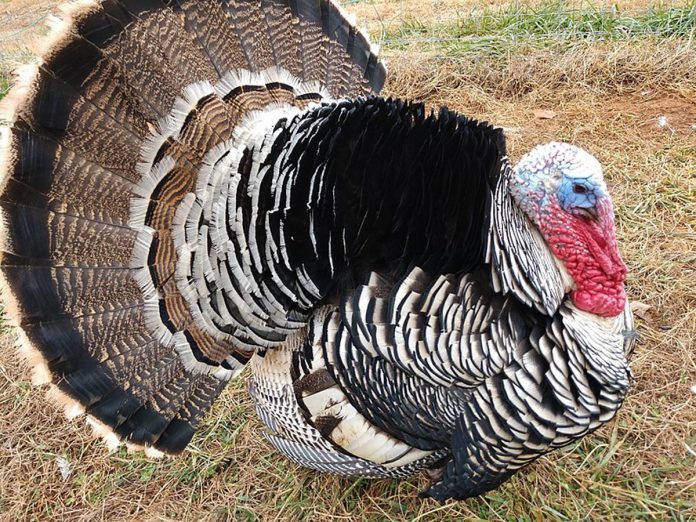
The Turkey bird has long been part of the foodscape of the Americas, established in Indigenous American cultures well before Thanksgiving became a holiday. Every year the autumnal pomp of November brings up the Turkey bird as a recurring holiday mascot, though at any other point in the year when you hear “Turkey” you’re usually prompted to think about the nation Turkey. We know that Turkey birds are native to the Americas, so why is the Turkey bird called a Turkey?
First we should make it clear, the Turkey bird is not native to the nation of Turkey which straddles the northern portion of Southwest Asia. With this intuitive assumption debunked, we should dig deeper into the terminologies at hand here.
The nation Turkey’s name receives its base “Turk” from the Göktürks, a Central Asian nomadic people who are largely considered to be the ancestors of several Turkic ethnic groups today. From the 15th century until the 1920’s, the Ottoman Empire based out of Turkey governed much of Southwestern Asia, Northern Africa and Southeastern Europe – hence it was not uncommon for commodities from these regions to be labeled as “Turkish” in global markets. But again, Turkey birds are native to the Americas and were not found in the Ottoman Empire.
Just south of the Ottoman Empire was Abyssinia, what is now Ethiopia and Eritrea in East Africa. Native to these lands is the Guinea fowl a cousin of the Quail which bares some resemblance to the Turkey birds we know and love. There is evidence to suggest that European merchants trading with the Ottoman Empire gained hold of these East African Guineafowl – and just as other commodities associated with the Ottoman East, these birds were dubbed “Turkish”, in this case Turkey coqs (Coq being French for Rooster). It is likely when European invaders came across the (what we call) Turkey birds in the Americas, in a consequential misnomer they mistook them for the Turkey Coqs of East Africa due to a perceived resemblance between the two types of birds. And the name stuck.

Taking this discussion one step further into other languages, this theory makes even more sense when we consider Turkey etymology is confusing outside of the English language too. In French for example, the word for Turkey is Dinde which comes from D’Inde meaning “from India” – this is attributed to Europeans believing they had arrived in India rather than North America early on in the era of imperialism. In a few Southeast Asian languages, the Turkey bird is named after various European nations as it likely arrived to Southeast Asia via European merchants, for example in Malay the word for the Turkey bird is “Ayam Belanda” which translates to “Netherlands Chicken”. In Turkish, Turkey birds are referred to as “Hindi” referring to India – this may follow the same misnomer seen in the French case though personally I find it odd since the Ottoman Empire and Turkic peoples have long been in contact with the Indian subcontinent, perhaps they just went along with this “mainstream mistake” for business purposes. In Arabic we call the African guineafowl “Deek Habasha” which translates to “Abyssinian rooster”, and because we originally did not have Turkey birds in the Arab world, we also call Turkey birds “Deek Habasha”. Some of the only languages to not use the Guineafowl misnomer or European chicken type terminologies are Native American languages which often carry several names for Turkey birds even within a single language; for example in Nahuatl (Aztec) the word for Turkey bird is “wuehxōlōtl” (from which Mexican Spanish derives “Guajolote”, the word for Turkey bird) and in Navajo they’re called “Tazhii”.
Regardless of language or culture, culinary tradition can offer some of the most interesting scopes into the history of a region. Because the world around us is rich with complexity and nuance, we should take it upon ourselves to be cognizant of its ever evolving and tangled intricacies.
End Note:
The Turkey itself carries rich sociocultural iconography among several indigenous peoples of the Americas, this holiday season let us appreciate the impactful contributions of the Indigenous Americas on the sociocultural scape of the United States whether its Iroquois influence on early American government, various impacts on the lexicon of American English or the contributions of Indigenous American societies to the fields of agricultural sciences, astronomy, botany and ecology. Our education system does a disservice to the rich heritage of the Indigenous Americas and whitewashes decades of genocide, war and systemic injustice against these communities while simultaneously erasing contributions of Indigenous peoples to the development of North America as we know it today. Let us be forward looking and think more critically about how we as a society talk about the Indigenous Americas, the first step is educating ourselves, for this reason I am showcasing the organization Native Land which started up their map project in 2015 that showcases historical ranges of Indigenous peoples globally. We should strive to educate ourselves on the many cultures of the world including Indigenous cultures and celebrate, uplift and support them. If you would like to support the Native Land project, please consider going to their website and seeing how you can help out. Currently they are growing the map to include information about Indigenous peoples in Asia as well, if you feel like you can be a support in this initiative please feel free to reach out their team. And with that, I wish everyone an introspective and restful holiday season!










